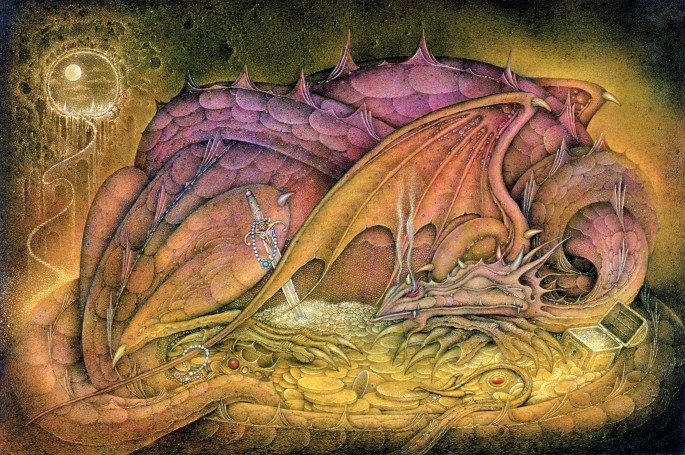Apep, Egypt
Apep was a giantic, serpentine creature residing in Duat, the Egyptian underworld. Earthquakes and thunderstorms were considered the product of Apap's roar, and solar eclipses were caused by Apep attacking Ra, god of the sun, during the daytime. Apep represented evil and all outside the ordered cosmos. Learn more
Lung, China
The highest ranking animal in the Chinese animal hierarchy, lung are closely associated with rain, drought being the fault of a lazy dragon. Chinese prayers for rain often invoke dragons. Traditional customs during festivals involve a dragon dance, once meant to ritually bring good weather and a bountiful harvest, now are mainly performed for entertainment. Historically, the emperor would be identified with dragons or even considered incarnations of divine dragons. Eventually, the emperor was the only human allowed to possess belongings featuring dragons. Learn more

Mushussu, Ancient Mesopotamia
Mushussu was a serpentine, dragonic monster with the body and neck of a snake, the forelegs of a lion, and the hind legs of a bird. The creature could be benevolent or malevolent, but was also known as the "roaring weather beast" associated with the god Ishkur - the god of weather, hurricanes, storms, thunder, and rain. Mushussu were a general protective emblem and could be a symbol for deities. Learn more
Bolla, Albania
Bolla is a demonic serperntine dragon with a long, coiled body, four legs, silver eyes, and small wings. Bolla was said to sleep throughout the entire year, waking annually Saint George's Day and peering into the world until it saw a human, which it would promptly devour. Upon finishing the meal, the bolla would once again slumber until Saint George's Day. Learn more
Lindworm, Europe
The lindworm was a wingless serpentine creature with a stereotypical dragon's head, a serpent-like tail and two clawed forelimbs. The shedded skin if a lindworm was said to significantly increase a persons knowledge of nature and medicine. Lindworms were associated with disease, ate cattle and dead bodies, sometimes invading cemetaries to feed. Surprisingly, sightings of this creature were signs of exceptional good luck. Learn more